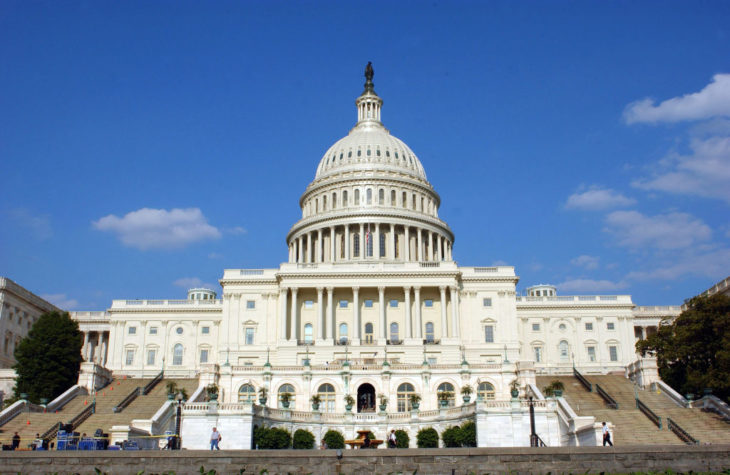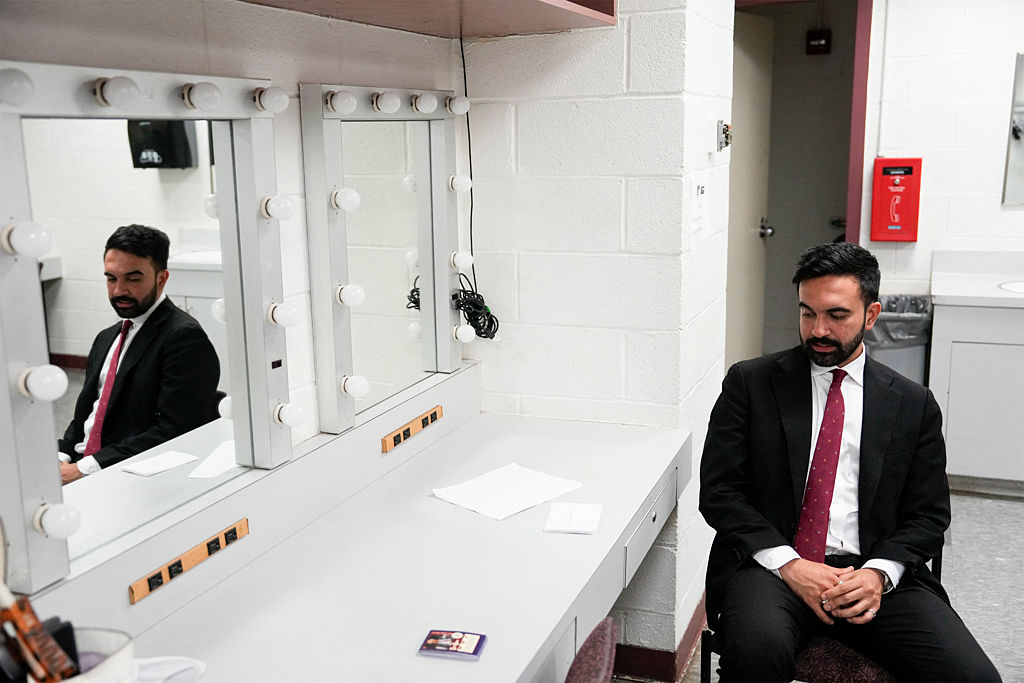The beginning of the end of the filibuster
The Democrats’ never-ending struggle to find something that all of the party’s 50 senators can agree on has claimed many victims: Joe Biden’s popularity, a good night’s sleep for those poor reporters who cover the Hill 24/7, Joe Manchin’s ability to walk the corridors of the Capitol unimpeded, Kyrsten Sinema’s freedom to use the bathroom without being heckled.
But could Biden’s administrative travails be about to claim a more serious casualty? Listen carefully and beneath the din of reconciliation negotiations, you can hear the foundations of the filibuster crumbling.
When the president was asked about the Senate rule in a CNN town hall last week, he said he was “open to fundamentally altering it… That remains to be seen exactly what that means, in terms of fundamentally altering it, and whether or not we just end the filibuster straight up.”
In particular, Biden entertained adding further exceptions to the rule for the debt ceiling and voting rights. When asked about it the next day, White House press secretary Jen Psaki said: “Stay tuned.”
“We are not going to do what we need to do next year until we build enough intestinal fortitude to start operating a little outside or beyond our comfort zones,” said Jim Clyburn yesterday of his party’s inability to agree on anything.
Whether or not Democrats heed the House Majority Whip’s call for “intestinal fortitude”, they will certainly be acutely aware of the risk of having little to show for their two years in control of the legislative and executive branches of government when next November comes around.
As the flagship Build Back Better package continues to be watered down — paid leave being the latest major component to hit the cutting room floor — those worries will only grow. Defeat in Virginia next week would mean full-blown panic mode. And the temptation to rewrite the rules in their favor will intensify.
If (or, rather, when) Joe Biden decides he wants to rewrite the filibuster rule, he will face a familiar problem: opposition from centrist Democrats, foremost among them Kyrsten Sinema and Joe Manchin.
Manchin and Sinema have been straightforward about their support for the filibuster. But exactly where those senators stand on a carve out for voting rights is less clear. Biden can at least now claim that his voting rights legislation has the support of 50 senators. Whereas previous attempts to rewrite election rules failed because of insufficient support among Democrats., the filibuster is all that stands between the latest, Manchin-approved version and the president’s desk.
If Democrats manage to convince themselves that voting rights constitute a special exception to the filibuster, why stop there? The logic of the sacrosanct nature of the right to vote, or the economic necessity of being able to raise the debt ceiling without 60 votes could be applied to all manner of other policy areas; gun control, for example, or immigration reform. And if Democrats see such issues as too important to be held up by the filibuster, why wouldn’t Republicans make similar arguments about, say, abortion restrictions?
Talk of reforming the filibuster could become something of a self-fulfilling prophecy. If its days are numbered, the thinking goes, we may as well be the party to do it and be the first to reap the legislative rewards.
More filibuster reform proposals are coming, including from the White House. And the bleaker the outlook for Democrats, the more tempting those proposals will become.
*** Sign up to receive the DC Diary in your inbox every weekday ***
Do the costs of vaccine mandates outweigh the benefits?
For weeks, we have been told that vaccine mandates work. This claim defined the criteria for success in strictly utilitarian terms: did the rules cause more people to get vaccinated? They did, and were therefore a policy success.
Of course, there are principled objections to forcing someone to be vaccinated if they want to keep their job. Vaccine mandate opponents would argue that the proponents were judging the policy too narrowly.
But even ignoring the principled objections, mandates have hit a bump in the road. Consider New York. As of November 1, all city workers must have received at least one dose of the COVID-19 vaccine or be placed on unpaid leave. The city’s municipal workforce is proving more resistant to the mandate than many expected.
With days to go until the rule comes into effect, just 65 percent of the Fire Department’s firefighters, fire officers and EMS workers have been vaccinated. According to the New York Post, 37 percent — around 6,000 officers — of the city’s cops are unvaccinated.
It’s hard to believe that all these key workers will trudge to the pharmacy and comply with the mandate by next week’s deadline. The result, then, will be considerable disruption to essential services in America’s largest city. It’s not hard, therefore, to see how a mandate designed to save lives risks costing many more thanks to a shortage of firefighters and police.
The under-control status of the virus in the city, as well as the prospect of more effective treatments for COVID-19, should factor into that cost-benefit analysis. Does it really make sense for a city, especially one in the middle of a spike in violent crime, to risk waving goodbye to as much as a third of its police officers and firefighters?
The mandate clash may be an exasperating situation, as well as an intriguingly topsy-turvy clash between labor and employers. The hesitancy of so many to get vaccinated, in defiance of mandates or otherwise, isn’t something worth celebrating. Advocates of mandates will probably look at the clash in New York and double down on the importance of the rules. The scale of the opposition, they will claim, only demonstrates the need for such measures.
But policymakers must deal with the world as it is, not as they would like it to be. And it may prove that mandates do more harm than good. The responsible course, then, might be to scrap such rules rather than stick to their guns. More likely, however, decision-makers let this public health choice become yet another pandemic proxy battle that has more to do with signaling how seriously you take the virus than doing what is best for your city, state or country.
Hill hounds
Yesterday saw a brief paw-se in hostilities for the annual bipawtisan Halloween party, a parade of dogs in fancy dress through the Hart Senate Office Building. The Spectator’s best costume prize goes to the dog in the AOC-imitating outfit that read “TAX THE CATS”. Meanwhile, Thom Tillis, the Republican senator from North Carolina and the event’s organizer, decided to dress his puppy Theo as Kyrsten Sinema, complete with pink wig and leggings. His other dog, Mitch, was dressed as his namesake, the Senate minority leader.
How blue-collar is Build Back Better?
Biden presents his Build Back Better legislation as a social welfare boon for the many paid for by the few. But new research by the Committee for a Responsible Budget suggests otherwise. They find that the legislation could in fact deliver a tax cut to high-income Americans in the first few years.
One of the measures on the table is a two-year repeal of the $10,000 cap on the State and Local Tax (SALT) deduction, a component of the Trump tax reforms that led to a tax rise for affluent blue-state suburbanites. Were the SALT cap repeal to make it into the final package, it would represent a $70 billion tax cut for the top 5 percent of earners in 2023. The wonks at the Committee for a Responsible Federal Budget weigh that cut against proposed tax rises and estimate that the net effect would be a $20 billion reduction in tax obligations for the top 5 percent, half of which would benefit the top 1 percent of households.
As you may have noticed, Build Back Better is, to put it politely, a bit of a moving target at the moment. And so detailed discussion of its fiscal and economic consequences is not easy. But the CRFB research demonstrates that any package that includes a SALT cap is a package that will struggle to match Joe Biden’s Robin Hood rhetoric.
What you should be reading today
Ian Williams: Can Beijing buy the Taliban?
Stephen Daisley: As COP26 looms, Glasgow is facing a waste crisis
Timothy Jacobson: In defense of the English original sandwich
Charles Fain Lehman, City Journal: Did George Floyd’s death weaken trust in cops?
Elbridge Colby, Wall Street Journal: The fight for Taiwan could soon come
Meridith McGraw, Politico: Trumpworld fears it has gone too conspiratorial?
Poll watch
President Biden Job Approval
Approve: 42.3 percent
Disapprove: 52.1 percent
Net approval: -9.8 (RCP Average)
Americans who think now is a good time to find a quality job: 74 percent (Gallup)

























